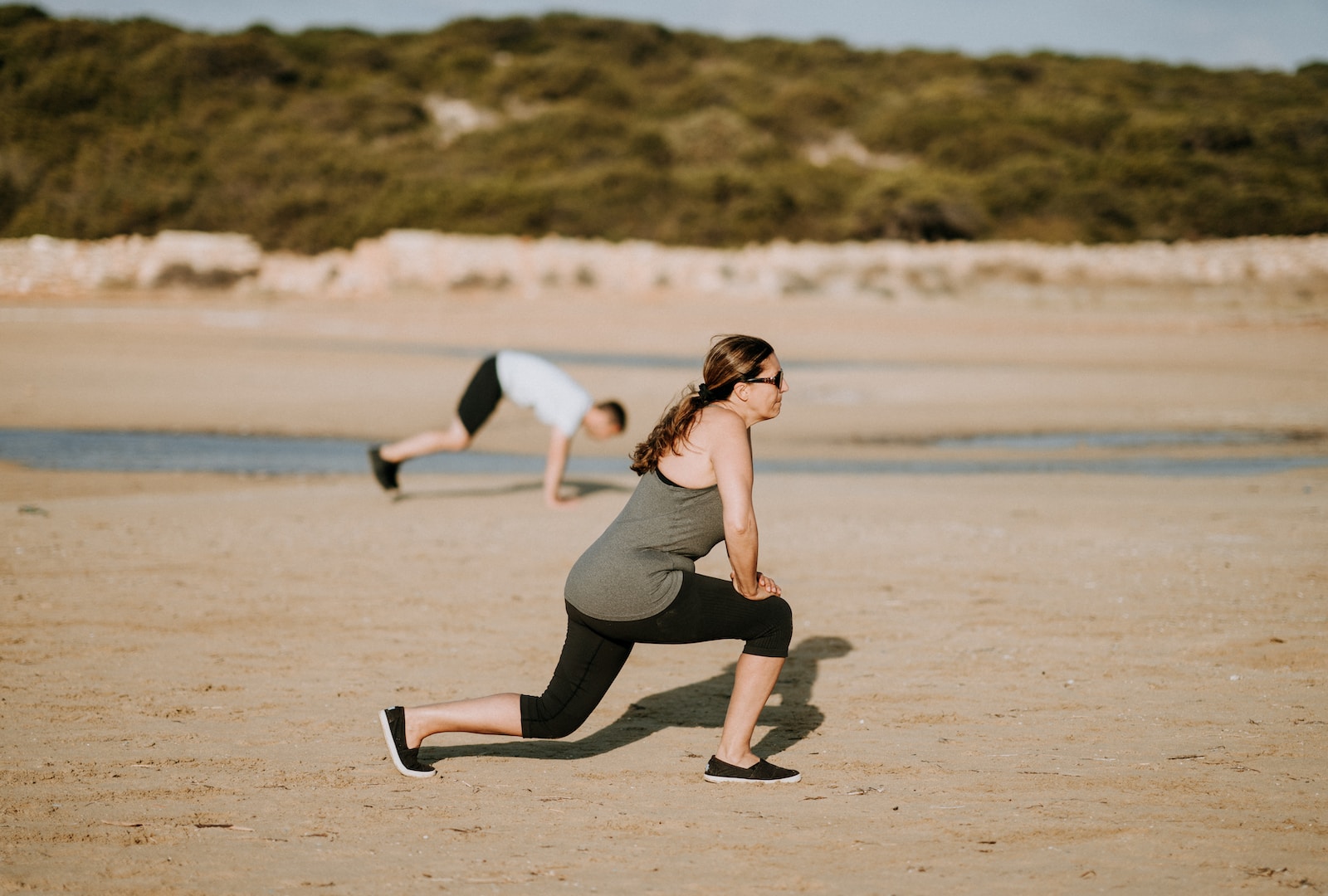Introduction: A Tale of Two Fabrics
Everyone loves a great pair of jeans. They’re like your trusty wingman when it comes to creating a casual and chic ensemble.
But have you ever heard of chambray and wondered what it is? Despite being commonly mistaken as denim’s twin, chambray stands on its own in the fabric world with its unique charm.
This article unravels the yarns that bind denim and chambray, two popular yet often misunderstood fabrics. Often found in shades of blue, both denim and chambray have their individual stories to tell.
A journey through time reveals how they’ve woven themselves into the annals of fashion history. Not only will we delve into their origins but also explore how these fabrics are made, thus highlighting what sets them apart from each other.
The Denim and Chambray Debate: More Than Just Blue Jeans
You might be surprised to know that the terms ‘denim’ and ‘chambray’ denote types of fabrics rather than styles or cuts of clothing. The two are often confused for one another due to their similar appearance—generally blue and appearing somewhat rough in texture—but they each boast distinct characteristics that set them apart.
The most notable difference lies in their weave patterns. While both utilize colored warp threads (often dyed indigo) against white weft threads, denim employs a twill weave which gives it a distinctive diagonal ribbing on its reverse side—a trait chambray lacks thanks to its plain weave technique.
Quick Snapshot: Denim vs Chambray – The Basic Differences
Visually discerning between these two materials can be tricky at first glance owing to their shared blue hue resulting from the indigo dyeing process. However, upon closer inspection, you can spot some key differences which lie principally in structure—the way the fabrics are woven—and weight—the heft or lightness felt when handling them.
Denim is characterized by its sturdy twill weave consisting essentially of three wefts crossing over one warp thread—this gives it not only durability but also that remarkable ‘self-pattern’ where visible lines run diagonally across the fabric surface. On the contrary, chambray presents a more uniform appearance due to its plain square weave where single yarns alternate between warp and weft creating an evenly textured surface with no distinguishing lines or patterns—giving it an overall lighter look and feel than denim.
Denim 101: Not Just Your Average Blue Jeans
A History Lesson: How Denim Conquered the World
What is it about denim that has allowed it to transcend boundaries of geography, culture, and class? Originating from Nîmes, France (hence ‘de Nîmes’ or denim), this hardy fabric was designed for durability. But its journey from workwear necessity to fashion staple is a testament to its versatility.
In the late 19th century, Levi Strauss revolutionized fashion with the invention of blue jeans – trousers made of denim designed for gold miners. The marriage between durability and comfort led to its adoption by the working class.
As decades passed, the influence of pop culture helped cement denim’s place in everyday fashion. From James Dean’s rebellious allure in “Rebel Without a Cause” to Brooke Shields’ iconic Calvin Klein ads – denim wasn’t just practical; it was aspirational.
Fabric Deep Dive: What Makes Denim, Well, Denim?
The magic of denim lies in its structure. At first glance, it may seem like any other fabric; but on closer inspection you’ll discover a world woven with ingenuity and tradition.
The secret is in its unique weave pattern – a 2×1 or 3×1 twill construction that allows for an interplay of warp (the vertical threads) and weft (the horizontal threads). This gives denim its distinctive diagonal ribbing on the underside while creating a sturdy surface on top – an interweaving dance that makes denim so resilient yet comfortable.
Weaving Magic: The Twill Weave Technique
Let’s delve into the twill weave technique—a method responsible for giving denim its signature look and feel. A twill weave consists of weft threads going over one or two warp threads then under two or more. This pattern results in a diagonal line known as wale.
This weaving style not only enhances durability but also helps hide dirt and stains—making it an ideal choice for workwear originally worn by miners and cowboys. Plus, this unique patterning also contributes to the sought-after fading characteristic seen along these diagonal lines during extended wear or washing— adding personality to every piece of beloved denims over time.
Color Me Blue: Indigo Dyeing Process
If twill weaving gives denim its texture, indigo dyeing gifts it with color—the characteristic blue that has become synonymous with casual coolness around the globe. The process involves repeatedly dipping yarns into indigo baths which are left exposed to air after each dip— allowing oxygenation that develops into deep-blue tones we adore. Yet another fascinating aspect is how indigo dyes only the surface of yarns without penetrating through their core—a phenomenon resulting in gradual fading patterns unique to each wearer’s lifestyle—thus making every pair of jeans tell their own story over time; some might call this fabric poetry!
Weight Matters: Differentiating Light And Heavy-Duty Denims, Last but not least let’s talk weight— often overlooked but crucial aspect when choosing your perfect pair! Denim comes in different weights which directly impact both comfort & longevity. The weight is actually defined by how much a yard of such fabric weighs—in ounces. A rule-of-thumb states anything under 12oz would be considered lightweight (perfect summer-jeans), anything above 16oz starts stepping into heavy-duty territory (think raw Japanese Selvedge). While heavier denims can be uncomfortable initially & require breaking-in period—they tend to last way longer eventually becoming second skin fitting your form perfectly!
The Story Behind Chambray: Tracing Its Roots
Believe it or not, chambray’s tale begins in the quiet commune of Cambrai, France. Here, it was originally produced as a sturdy fabric for the working class in the 18th century.
Known at first as ‘batiste de Cambrai,’ it was intended to be an affordable, hard-wearing material with a high level of comfort. Over time, Chambray spread across Europe and eventually reached American shores where it found its place in workwear history.
The popularity of chambray skyrocketed during the late 19th and early 20th centuries when it became a staple fabric for blue-collar workers’ uniforms. It’s even said that cowboys regularly donned chambray shirts because they were durable enough to withstand their tough lifestyle but breathable enough to keep them cool under the Texan sun.
Decoding Chambray: Understanding Its Charm
Chambray shares some similarities with denim – they both come from cotton and can be dyed with indigo. However, what truly sets chambray apart is its unique weave.
Weaving Simplicity: The Plain Weave Technique in Chambray
Unlike denim’s twill weave, which produces that distinctive diagonal ribbing effect, chambray employs a simple plain weave technique. This type of weaving involves one yarn over and one yarn under method, creating a criss-cross pattern that results in an even surface on both sides of the fabric.
The hallmark characteristic of chambray is its colored warp (usually blue) combined with a white weft (horizontal threads). This combination creates that classic muted color appearance adding an appealing vitality to its simplicity.
Beyond Classic Blue: The Color Spectrum of Chambray
While we often associate chambrays with shades akin to their denim counterparts – varying hues of blue – modern fashion has taken this versatile fabric on quite a color adventure! Nowadays you’ll find shirts, dresses and other garments made from pink, green or grey chambrays – there’s virtually no limit when it comes to exploring this fabric’s potential!
A Summer Favorite: Why Chambrays Are Your Go-to Lightweight Champions
Thanks to their plain weave structure and lighter weight cotton yarns used for weaving; chambrays are highly breathable fabrics making them exceptionally suitable for summer attire. Another advantage?
Thanks to their versatility – equally at home on office chairs as they are on beach loungers – you really can wear your favorite piece all day long! From morning meetings right through evening barbecues – no need for outfit changes when your go-to garment is made from this trendy textile!
The Great Showdown: Comparing and Contrasting Denim and Chambray
Denim vs. Chambray: Battle of the Weaves
When it comes to weaving techniques, denim and chambray are diametrically opposed. Denim, with its rugged allure, owes its character to a complex twill weave. This diagonal patterned weave allows for a robust and sturdy fabric that has been synonymous with durability since the days of gold miners. Chambray, on the other hand, is all about simplicity and lightness. Employing a plain weave – where single threads cross over and under each other in a checkerboard fashion – chambray achieves an airy texture that’s perfect for comfortable summer attire. Despite their shared origins in indigo dyeing, these fabrics utilize distinctly different weaves which endow them with unique properties.
Color Wars: Indigo Dominance or Spectrum Diversity?
The color blue is fundamental to both denim and chambray – an inheritance from their shared history of indigo dyeing. However, don’t let this singular hue deceive you into thinking these fabrics lack versatility. Denim’s deep dive into blues ranging from dark indigo to light stonewashed shades has dominated our wardrobes for decades.
In contrast, chambray exhibits wider spectrum diversity playing across muted tones as well as bright hues; pink chambrays shirts or green chambrays dresses are not uncommon sights on summer days. While denim continues to be celebrated for its indigo dominance, chambray dares to venture beyond tradition into a rainbow of possibilities.
Weightlifting Contest: Heavy-duty Hero or Lightweight Lover?
In terms of weight, denim can be likened to Hercules; it carries the title “heavy-duty hero” with reverence earned over centuries as work wear used by miners, cowboys and laborers alike. With weights varying from 12 ounces per yard (for traditional 5-pocket jeans) up to 32 ounces (for ultra-heavy Japanese selvedge), denim carries its weight literally on its sleeves. In contrast stands chambray – the lightweight lover – who aims not at strength but at breezy comfort instead.
With weights usually around 4-6 ounces per yard, Chambray offers breathability that makes it highly suited for shirts worn in warm weather or layered under cozy sweaters when temperatures drop. The choice between heavyweight hero denim versus lightweight lover chambray depends largely on your personal style preferences along with seasonal considerations.
Fashion Forward: Styling with Denim and Chambray
Cultivating the Denim Demeanor: From Rugged Workwear to Fashion Staple
Denim, with its robust and enduring appeal, has evolved far beyond its original use as durable workwear. It’s become a sartorial symbol of cool, casual confidence. This transmutation from rugged laborer’s attire to universal fashion essential attests to denim’s versatile charm.
Its ability to cater not only to the blue-collar brigade but also high fashion runways is sheer alchemy that few other fabrics can boast. Experimentation is key when it comes to styling denim.
Pairing a denim jacket with a delicate lace dress can create an intriguing juxtaposition of toughness and femininity. Or perhaps try your hand at ‘double-denim’, the artful technique of wearing two denim pieces together without looking like you’ve stepped out of a Western movie.
Jeans Genius – Crafting the Perfect Pair
Finding that perfect pair of jeans can often seem like seeking the Holy Grail in a world overrun by stretch-jeggings and low-rise nightmares. But fear not! A well-cut pair that fits like second skin, flatters your silhouette, and is comfortable enough for daily wear does exist.
The secret lies in understanding your body type and choosing the right style—be it bootcut, straight-leg or skinny—that compliments it best. Remember that quality over quantity matters when investing in this universal wardrobe staple.
Chambray Chameleon – Beyond Pants
While chambray may be most commonly associated with button-down shirts (think old-school American workwear), this lightweight fabric has more tricks up its sleeve—or rather, yards on its loom. Chambray dresses are summer favorites thanks to their breathability and lightly structured drape.
For an ensemble that’s effortlessly chic yet comfortable, try pairing a chambray shirt with white linen pants or even layering it over your favorite sundress for breezy beach vibes. The possibilities go beyond what meets the eye — proving chambray as versatile as its heftier cousin denim.
Conclusion
Encased within this vast ocean called fashion lie our two beloved fabrics – denim and chambray – each holding their own unique charm yet sharing common grounds in versatility and appeal. As we continue our sartorial journey through life’s varied occasions—from casual Fridays at work to Sunday brunches—we now carry along with us an enhanced appreciation for these fabrics which blend comfort with style seamlessly. So here’s saluting these incredibly versatile materials that have woven themselves so indelibly into our wardrobes—and lives!
Embrace their chameleon-like nature: experiment, play around, find combinations you love! After all, in fashion as in life—the joy lies truly in discovery.
 Skip to main content
Skip to main content


